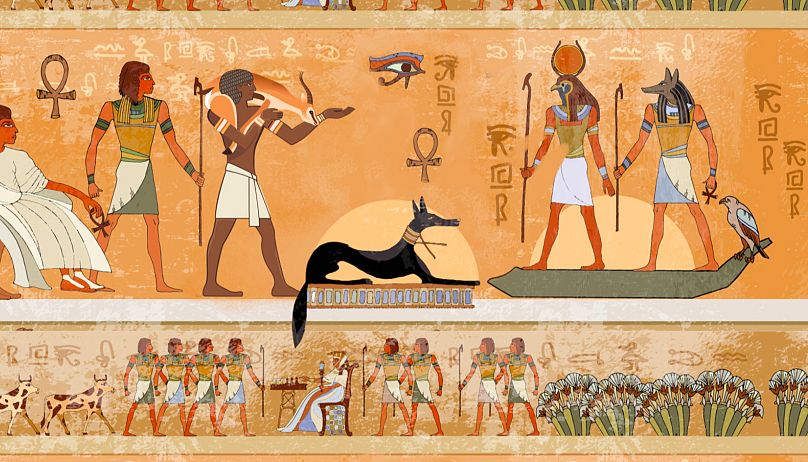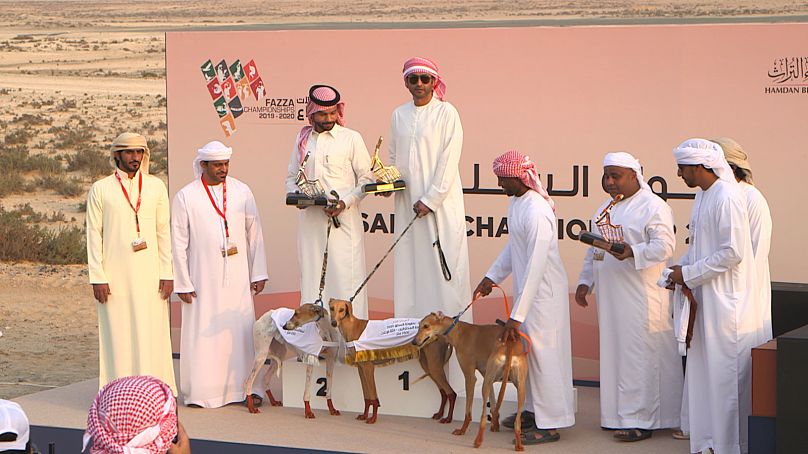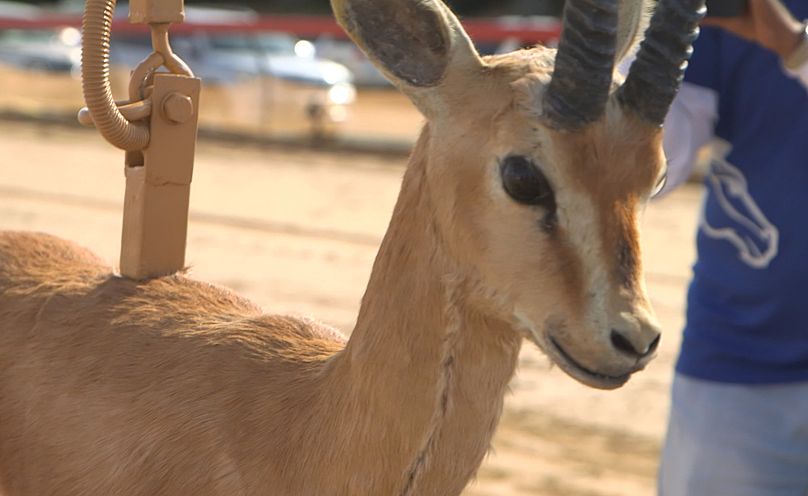With long legs, a lean body, and sometimes feathered ears, the Arabian Saluki is not only considered a canine beauty, but also a skillful hunter.
With long legs, a lean body, and sometimes feathered ears, the Arabian Saluki is not only considered a canine beauty, but also a skillful hunter.
The pack animals were traditionally trained to track rabbits in Gulf countries, but in recent decades they’ve become competitive racers given their top speed of around 65 kilometers an hour.
Historical tales
Saluki ancestry is believed to date back to ancient Egypt, with preserved artwork of the royal, and fiercely loyal, dogs found in carvings and paintings.
Later, Saluki breeds spread to the Fertile Crescent, an arc of land from present-day Egypt to Iraq, then to the Arabian Peninsula before reaching Europe and beyond in the mid 1800s.
Around the globe, the dogs evolved to become gentle, and dedicated, family pets.
In the Gulf, they also fulfilled their innate desire to run free, both as hunting dogs and on the race track.
Pawing after the prize
The 2020 Saluki Championship saw sixty finalists, out of hundreds of hopefuls, make it through to the final round in February.
In Dubai’s last event of the canine racing season, every competitor was vying to be top dog.
For the best view of the action, fans drove alongside the dogs as they tore up the racetrack.
Prize money can reach up to $40,000 dollars per race, and winning is no easy task according to some trainers.
“This work, it’s not something that can be done in a day or night,” says Emirati Saluki trainer Marwan Al Sabousi, who has a pack of around 30 dogs that he trains across the region.
“I have a farm in Turkey, I have a farm in Syria, and I train them and I select the best out of them.”
Al Sabousi’s three-and-a-half-year-old prize-winner Najda, won the Female Professional stakes at the popular regional event.
Technology meets tradition
A number of traditional and modern methods are used to protect, and also incentivize, racing Saluki’s.
Henna dye hardens and provides extra padding to their paws, as they sprint around rough sand tracks. And to entice the dogs to run faster, robotic gazelles have been deployed for first time in this race's 13-year history.
The combination of real animal hide and a spinning tail, is encouraging these sight hounds to exceed their personal best.
“When it [the mechanical lure] looks closer to a live gazelle, it affects the Saluki more - to give them more motivation,” explains Mosalem Al Amri, a Saluki committee member at the Hamdan bin Mohammed Heritage Centre.
SEEN ON SOCIAL MEDIA: SALUKI COMPANION
UAE resident from Germany, Sabrina is isolating with her adopted Saluki – saying she’s the perfect adventure partner.














